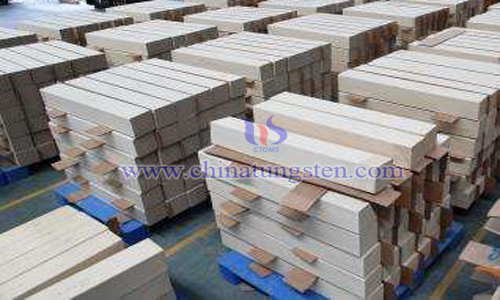Recycling of Tungsten Trioxide from Waste Denitration Catalyst
- Details
- Category: Tungsten Information
- Published on Thursday, 08 August 2019 01:18
SCR denitration technology is a necessary means for power plants to achieve ultra-clean emissions. Catalysts, as a core part of SCR denitration technology, lose their activity due to wear or blockage during operation. Some of the regenerable catalysts can be reused after regeneration, while the catalysts that cannot be regenerated face the situation of rational utilization and disposal.
According to incomplete statistics, the annual output of denitration catalysts in China is 50,000 tons, and the amount of WO3 that can be recovered from waste denitration catalysts is 2,500 tons, and the price of WO3 is very expensive. Therefore, it is necessary to consider the recycling of tungsten trioxide from waste denitration catalyst from the economic point of view or environmental protection.

The following technical process can be adopted to extract the tungsten trioxide in the waste flue gas denitration catalyst:
First, the waste flue gas denitration catalyst is purged with compressed air, and each module is purged for 20 to 23 minutes to remove dust in the tunnel;
Second, the catalyst after removing the dust is washed with a high-pressure water gun, each module is washed for 15-20 min, the pressure is 8-12 Mpa, and the dust in the tunnel is further removed;
Third, drying the rinsed catalyst;
Step 1
The catalyst is pulverized and added to concentrated sulfuric acid for acid hydrolysis, and after acid hydrolysis, water is added to obtain a titanyl sulfate solution.
Step 2
Adding 1% concentration of polyacrylamide, the colloid is aggregated into large particles, filtering the titanyl sulfate solution, adding excess ammonia water to the filter residue, and then performing secondary filtration, specifically including: filtering the titanyl sulfate solution, filtering residue An excess of 10% industrial ammonia water was added thereto, and the mixture was allowed to stand at room temperature for 5 days, and then subjected to secondary filtration.
Step 3
The filtrate obtained by the secondary filtration is heated to form a crystal of ammonium paratungstate, and the crystal of the ammonium paratungstate is dried and calcined to obtain pure WO3; the filter residue obtained by the secondary filtration is dried and calcined to obtain SiO2 and Al(OH). ) 3 mixture for making refractory materials. Wherein, the heating of the filtrate obtained by the secondary filtration to form the ammonium paratungstate crystal specifically comprises: heating the filtrate obtained by the secondary filtration to 80 to 100 ° C, and evaporating ammonia and water to form an ammonium paratungstate crystal.
According to comprehensive calculation, the above WO3 has a recovery efficiency of 93% and a purity of up to 90%. The recycling technology does not require high-temperature calcination, so it is relatively energy-saving and suitable for industrial production. In addition, the obtained SiO2 and Al(OH)3 mixture can be used for production. Refractory materials enable multi-generation and low cost.
- Tungsten Oxide Manufacturer & Supplier, Chinatungsten Online: www.tungsten-oxide.com
- Tungsten News & Prices of China Tungsten Industry Association: www.ctia.com.cn
- Molybdenum News & Price: news.molybdenum.com.cn
- Tel.: 86 592 5129696; Fax: 86 592 5129797; Email: sales@chinatungsten.com



 sales@chinatungsten.com
sales@chinatungsten.com